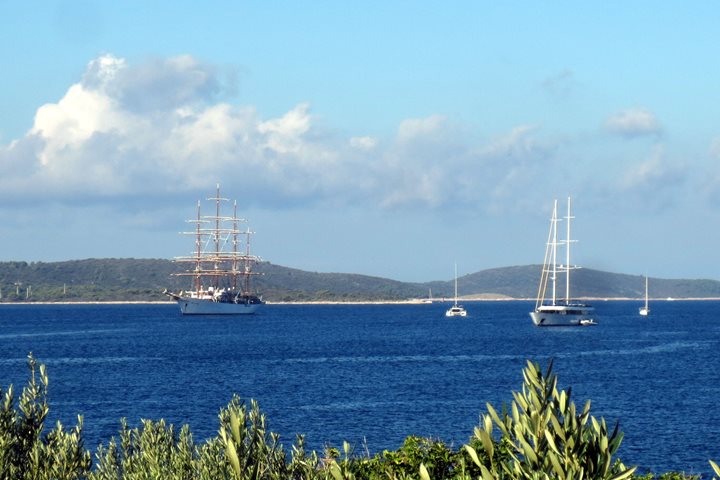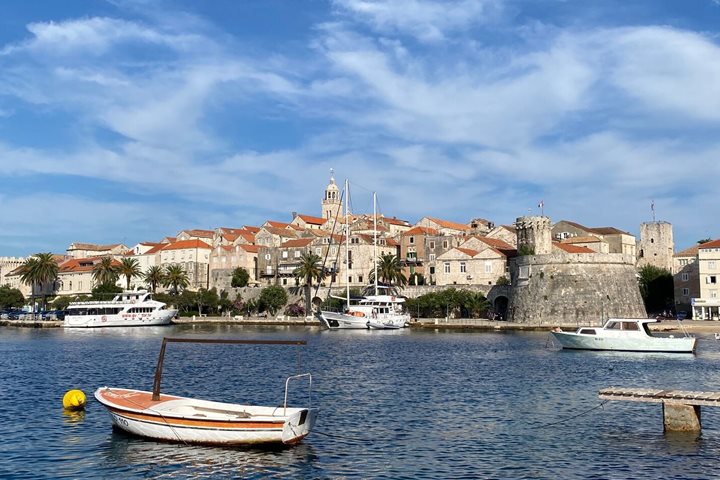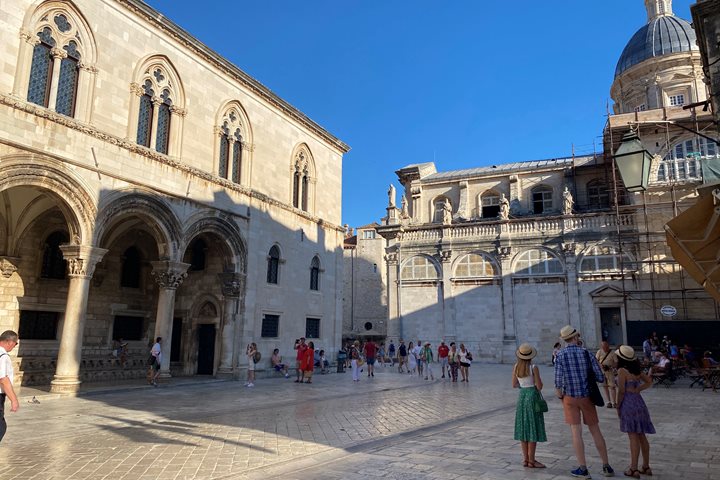As we progress southbound through the Adriatic Sea, the spectacular landscape of the Dalmatian Coast continues. This region is characterized by limestone formations which tower above sea level and plunge steeply into the waters. These mountains form a coastline which is highly fragmented; hundreds of small islands, promontories, and fjord-like inlets give the Dalmatian Coast 2000 miles of shoreline even though it is only 500 miles long as the crow flies.
Today, Sea Cloud pulled up to the city of Durres, the largest port in Albania. Known as Dyrrachium in Roman times, this location has long been an important node on trans-Adriatic trade routes; it linked with Bari on the Italian peninsula. The Roman era is largely buried by later periods of occupation, but its grand amphitheater has been partly excavated. Durres was also the end point of the Via Egnatia which led all the way east to Constantinople. The nation-state of Albania claims descent from the ancient Illyrian tribes of the region. Though they were eventually absorbed into the Roman dominion, the resistance efforts of Illyrian leaders such as Teuta and Pyrrhus are a source of national pride, albeit far-removed in time.
In contrast, the medieval resistance fighter Georgi Kastrioti (also known as Skanderbeg) is a prominent figure in the national identity of Albanians. Skanderbeg is renowned for his decades-long struggle against the Ottoman Turks in the 15th century and was championed by the papacy as a heroic Christian. His rebellion was based in Kruja, where today a museum celebrates his legacy. The Ottomans eventually defeated his army and ruled Albania for 300 years, but only after Skanderbeg died from a fever.
The enduring legacy of the Ottoman period is Albania’s diverse religious makeup – it has Catholics and Orthodox Christians, but it’s the only Muslim-majority country in the Balkans.
In Kruja, we visited a small Turkish village and see a performance of traditional Albanian song and dance while enjoying a meal of local food and wine. After we returned to the ship, expedition historian David Brotherson talked us through the origins and rise of Venice, the dominant state in the Adriatic through the Middle Ages. Their impact on the Dalmatian Coast is palpable, as their convoys of merchant galleys plied the waters along this dramatic landscape.







